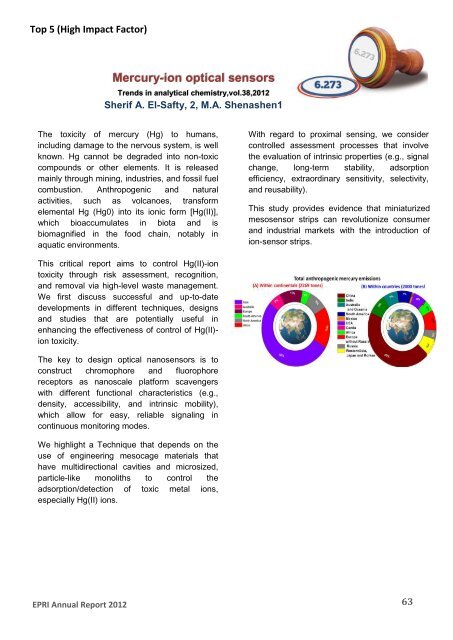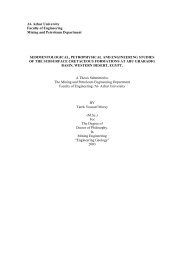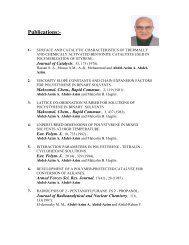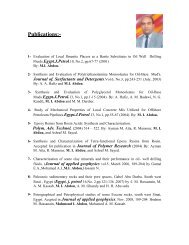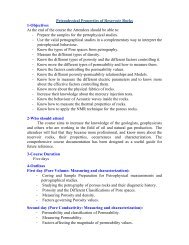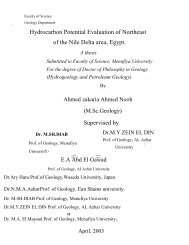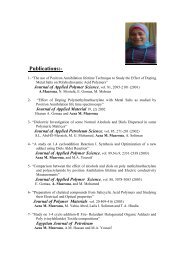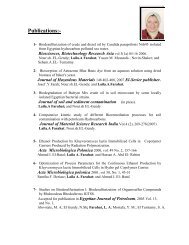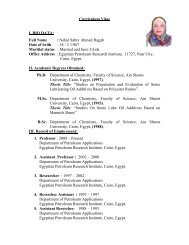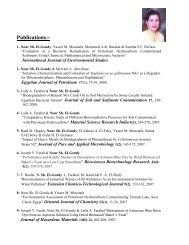Download - Egyptian Petroleum Research Institute
Download - Egyptian Petroleum Research Institute
Download - Egyptian Petroleum Research Institute
You also want an ePaper? Increase the reach of your titles
YUMPU automatically turns print PDFs into web optimized ePapers that Google loves.
Top 5 (High Impact Factor)<br />
Mercury-ion optical sensors<br />
Trends in analytical chemistry,vol.38,2012<br />
Sherif A. El-Safty, 2, M.A. Shenashen1<br />
The toxicity of mercury (Hg) to humans,<br />
including damage to the nervous system, is well<br />
known. Hg cannot be degraded into non-toxic<br />
compounds or other elements. It is released<br />
mainly through mining, industries, and fossil fuel<br />
combustion. Anthropogenic and natural<br />
activities, such as volcanoes, transform<br />
elemental Hg (Hg0) into its ionic form [Hg(II)],<br />
which bioaccumulates in biota and is<br />
biomagnified in the food chain, notably in<br />
aquatic environments.<br />
With regard to proximal sensing, we consider<br />
controlled assessment processes that involve<br />
the evaluation of intrinsic properties (e.g., signal<br />
change, long-term stability, adsorption<br />
efficiency, extraordinary sensitivity, selectivity,<br />
and reusability).<br />
This study provides evidence that miniaturized<br />
mesosensor strips can revolutionize consumer<br />
and industrial markets with the introduction of<br />
ion-sensor strips.<br />
This critical report aims to control Hg(II)-ion<br />
toxicity through risk assessment, recognition,<br />
and removal via high-level waste management.<br />
We first discuss successful and up-to-date<br />
developments in different techniques, designs<br />
and studies that are potentially useful in<br />
enhancing the effectiveness of control of Hg(II)-<br />
ion toxicity.<br />
The key to design optical nanosensors is to<br />
construct chromophore and fluorophore<br />
receptors as nanoscale platform scavengers<br />
with different functional characteristics (e.g.,<br />
density, accessibility, and intrinsic mobility),<br />
which allow for easy, reliable signaling in<br />
continuous monitoring modes.<br />
We highlight a Technique that depends on the<br />
use of engineering mesocage materials that<br />
have multidirectional cavities and microsized,<br />
particle-like monoliths to control the<br />
adsorption/detection of toxic metal ions,<br />
especially Hg(II) ions.<br />
EPRI Annual Report 2012 63


